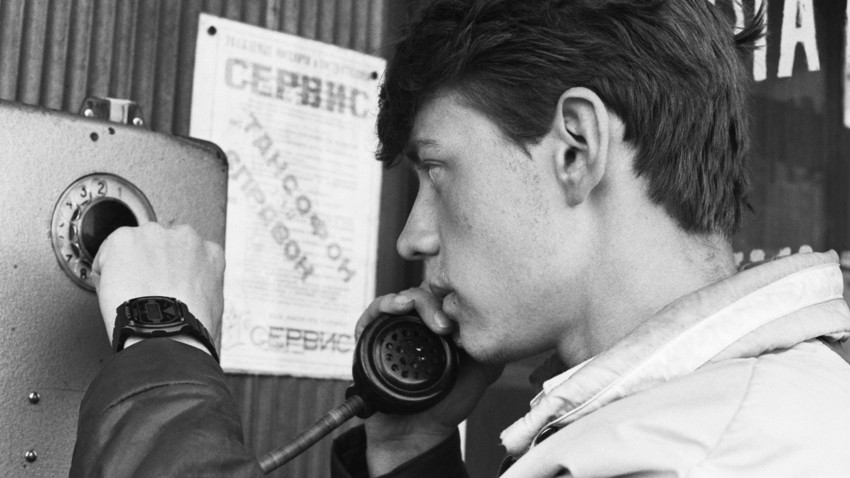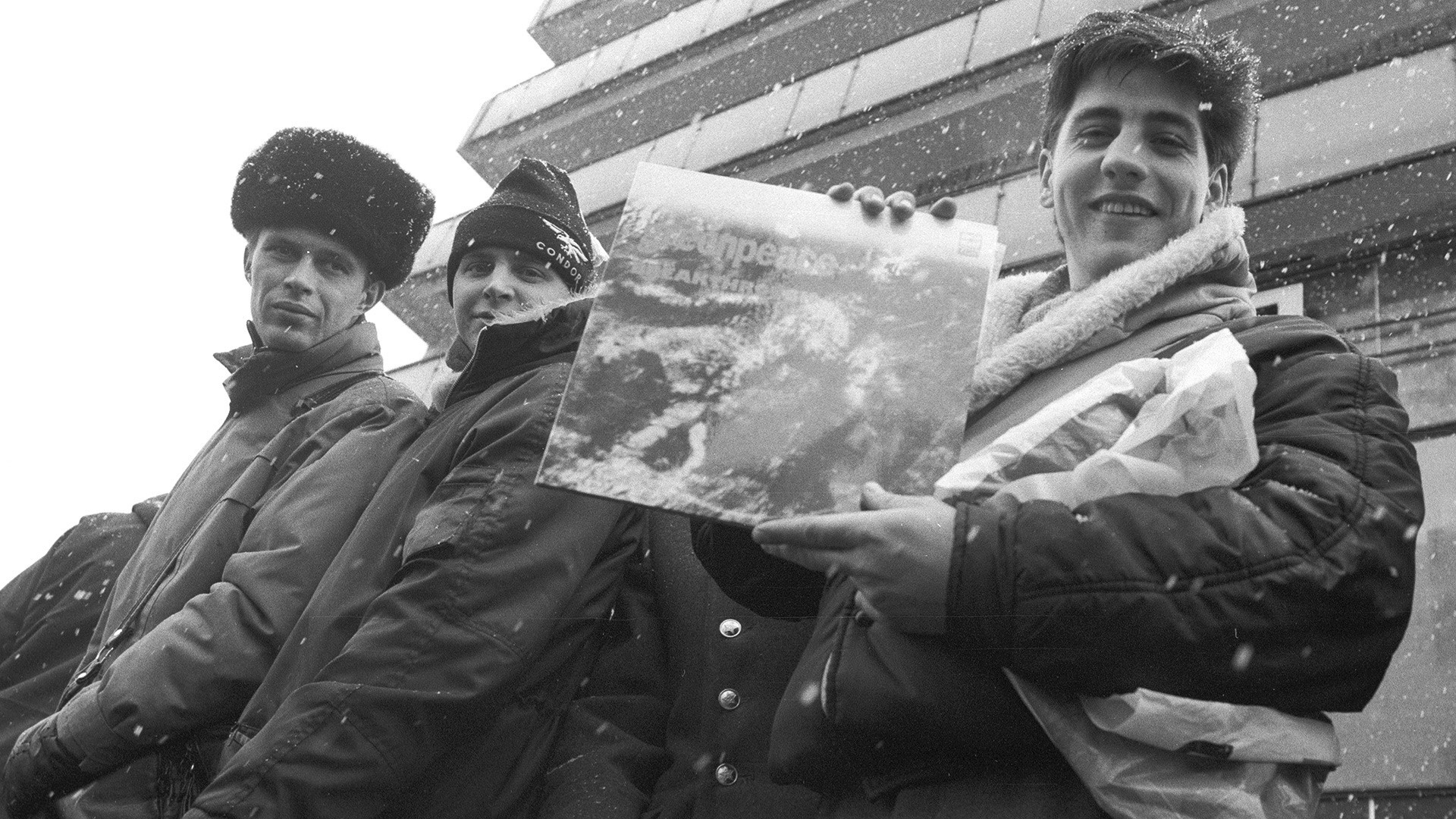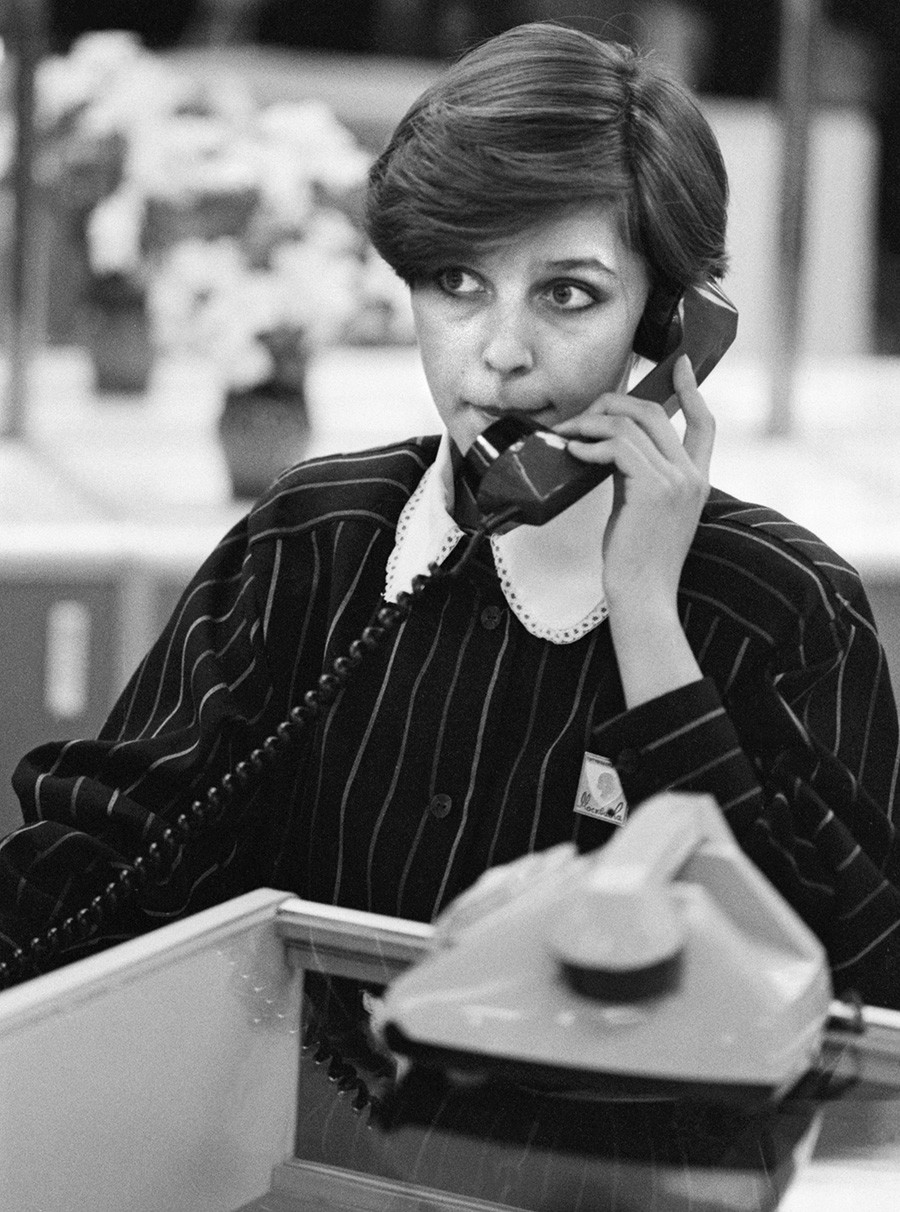How Soviet phone users accidentally discovered ‘Clubhouse’ in the 1980s

Long before the success of Clubhouse, Soviet youth discovered that a technical glitch in automatic telephone stations allowed them to join “conference rooms”, where they could talk, make new friends and even find a one-night stand.
Secret numbers
It’s impossible to say who discovered the existence of so-called “broadcasts” [эфиры] in the Soviet landline system, but two facts are fairly certain: the broadcasts appeared in the 1980s and came as a result of a technical malfunction.
The principle behind the broadcasts was akin to the viral Clubhouse app: telephone users dialed certain numbers — that were not connected to any particular user — and instead of having their call being disconnected, they were referred to a “room” where other people, who had also dialled the same number, were present.

There, strangers could discuss anything they wanted, from politics to literature, from illegal reselling foreign-made goods in the USSR to sex.
The secret telephone numbers leading to broadcasts changed as often as technical staff of the Soviet landline operator discovered and closed yet another such loophole. Then, a few new numbers were secretly leaked — sometimes by the same company’s employees — to the public and spread among the interested users who dialed those to enter yet another broadcast.

“For us, this was an unpleasant phenomenon, but for the rest of them — a pleasant one. This [technical glitch] allowed a large number of people to communicate [during broadcasts],” said Leonid Tufrin, a regional director of the North West Telecom company that provides telecommunications service in northwest Russia.
For residents of St. Petersburg — where the broadcasts gained most popularity — and the rest of the USSR, however, this was a golden opportunity.
Culture, smuggling and sex
A legend has it, the “Clubhouse” of the USSR was first discovered by the fartsovschikis — people who traded in illegally obtained foreign-made goods in the USSR. They used the “broadcasts” to connect to their accomplices and discuss business with impunity, knowing that their location would be impossible to track as the number dialed was not assigned to any real user.

Later on, the broadcasts became popular among common users who simply craved company. Like on the Clubhouse app, the broadcasts were sometimes, though not always, dedicated to specific themes.
“‘Scalper’ phone numbers were spread by students of the Institute of Soviet Trade and cadets of the school of the merchant fleet; students of polytechnic and medical universities were sources of ‘leisure-themed' phone numbers and the numbers leading to ‘intellectual’ broadcasts were leaked by students of the Saint Petersburg State University and the Herzen State Pedagogical University,” said an ex-broadcaster Alexander Kuzmin in an interview with TJournal.
Sometimes, the participants of such broadcasts organized “off-line” group meetings and romantic dates. For example, during one of the broadcasts, a couple of men exchanged numbers with two young women and agreed to meet later. “It turned out that the girl’s name was Maria [name changed], she had a friend named Dasha and they were ready to meet. We came to the date and it became clear that we both liked Maria, but not Dasha. Since my classmate was a tall, handsome man, the girl’s choice was obvious. After some time, Maria got pregnant and the couple got married,” said former participant of the broadcasts Georgy Bogachev.
Sometimes, people joined the broadcasts because they were bored. “When I went for a walk, I also dialled the number and entered a broadcast. We hid from the wind and rain in a telephone booth and [killed time] as there was nothing else to do,” described a woman her experience with the Soviet broadcasts.
Gone forever
The Soviet authorities were suspicious of the broadcasts and technical staff worked to eliminate the technical malfunction that allowed people to join the broadcasts. “[…] People from the party committee told us about such communities. We had to identify those and report them above, due to ideological reasons,” said Irina Grigorkina, who worked as a lecturer in 1980.

While the youth lobbied for the preservation of the broadcast, the landline company struggled to eliminate those, perhaps with the silent approval of the higher Soviet authorities.
Some argue the Soviet broadcasts were not nearly as massive a phenomenon as it was sometimes portrayed, its lifespan being short and popularity local.
Gradually, the broadcasts lost momentum and became extinct either, because of a technical update of the landlines in Russia that physically eliminated the opportunity or because of a gradual loss of interest of its former regular members.
Meanwhile, history looks like repeating in 2021, with the Clubhouse app gaining momentum in Russia.
Click here to read about the secret world of Soviet ‘fartsa’.
If using any of Russia Beyond's content, partly or in full, always provide an active hyperlink to the original material.
Subscribe
to our newsletter!
Get the week's best stories straight to your inbox
